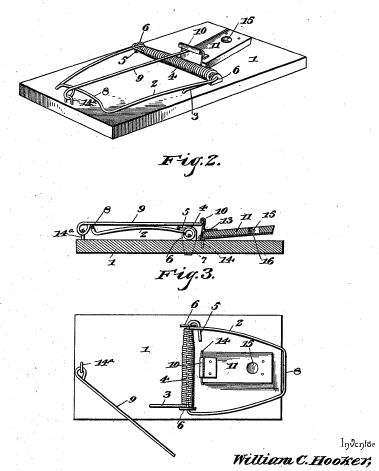Introduction
While the Moustrap-Powered Car will not be solving our "energy crisis," it does not emit any nasty pollutants and does provide an excellent oppurtunity to learn about basic design and problems solving techniques.
In this activity we will show you how to construct a basic mousetrap powered car. After construction and testing, you can then refine the design to meet whatever specifications you are required to me: time, distance, speed, etc.
The Design Process
The steps in any design process include:
- Identify and define the problem
- What need is currently not being satified?
- What product or process needs improvement?
- Do the research
- Is there an existing solution to the problem?
- What related products or processes can contribute to a solution?
- What new questions do I need to find answers to?
- Write the specifications
- Make a list of what the solution is supposed to accomplish
- color, size, weight, distance, cost, etc.
- Generate ideas
- Use a variety of techniques, (brainstorming, etc.) to come up with possible solutions
- Develop alternatives
- Avoid the trap of going with your first idea
- Come up with 3-6 possible solutions
- Evaluate alternatives
- Use a point system to see how each possible soultion meets each specification
- Do the testing
- Pick the possible solution from the previous step that had the most points
- Implement a prototype to test the possible solution
- Build a model or set up a simulation
-
- Test and record observations
- Make modifications and repeat this step
- Write the documentation
- Assemble documentation for patenting
- Write the user manual
About the Moustrap
|

|
The first American patent for the mousetrap was issued in 1894 to William Hooker. His patent drawing is shown on the left. His design has survived virtually unchanged although there are many othe designs available include traps that catch the mouse live.
The device works by pulling the jaw back(8) against the force of the spring(4). A locking bar(9) is placed over the jaw and placed under the end of the catch(11). When the catch is depressed, the locking bar swings out of the way, releasing the jaw which is driven into its original position by the spring.
The exact force of the spring varies depending on the manufacturer of the mousetrap but could be easily measured using a fishing scale. This is a good practice during a mousetrap-powered car competition to ensure that participants are using the same amount of spring tension.
|
The Mousetrap-Powered Car Challenge
The most common type of mousetrap-powered car challenge requires the participant to contruct a vehicle powered solely by an unmodified mousetrap. The performance criteria may be to travel as far as it can, as fast as it can, or a combination of these. It may be required to travel a minimum distance in under a certain time period. There may be a minimum or maximum footprint size for the vehicle, such as, it may have to fit inside a shoe box. Generally, any materials can be used.
Other regulations may effect the design of the vehicle. Most competitions require the vehicle to be self-starting by release of the latch. The designer is not allowed to touch the vehicle once it has started on its course. The vehicle must steer itself. Traveling off-course results in disqualification. Multiple runs may be allowed with the best time or average time used in the scoring.
|
|